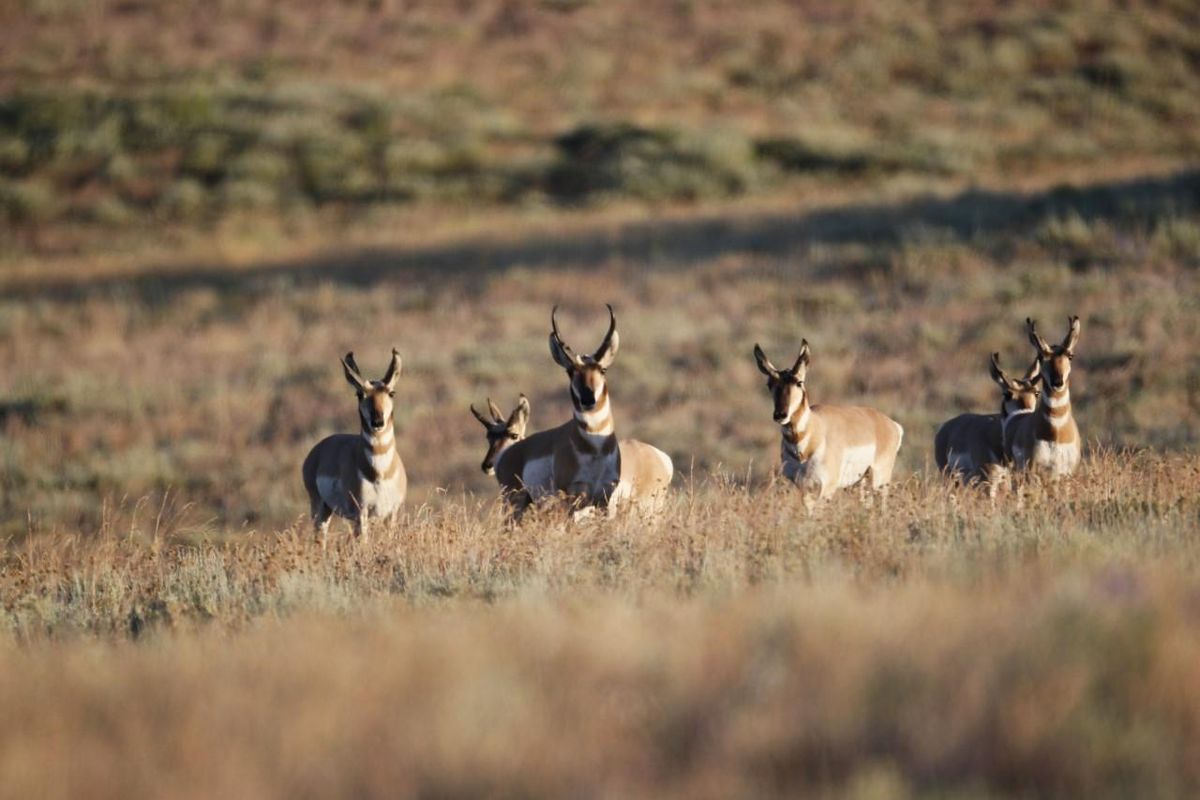Pronghorns released on Colville Reservation doing well

Pronghorns and the state of Washington aren’t often used in the same sentence. There was a time, many decades past, when Washington did have pronghorns, but they were essentially extirpated prior to 1900. They are surely the least-known hoofed animal classified as a game animal in Washington.
Two of Washington’s Native American reservations are in the process of bringing back the pronghorn. The Colville and Yakama reservations have acquired pronghorns from Nevada and released them within the reservation boundaries.
I recently spent a day with Richard Whitney, wildlife manager for the Colville Reservation, and several other members of their wildlife department. We traveled through the rangelands, where one day it’s hoped that pronghorns will be abundant, and I listened as he told of the recent introductions and plans for the future.
The first reintroduction occurred in January 2016 when 52 animals were released. The second was last October when an additional 98 animals were moved here, both times from Nevada.
Whitney explained they learned valuable lessons from the first release, when the animals arrived to deeper snow and colder temperatures than they were used to in Nevada. This caused the death of some animals. A few were again lost after the second release, but October weather conditions allowed the animals to adapt better and fewer died during the winter.
Driving through several miles of reservation land to the north of the tribal offices in Nespelem highlighted the amount of potential pronghorn range located here. It isn’t perfect, and Whitney elaborated on the need to improve the habitat and to redo the fences that had originally been erected primarily for cattle. Despite that, it looks like pronghorn habitat.
One major benefit is the number of ponds scattered throughout this range. Creating water sources for pronghorns can often be a major project, but that certainly isn’t needed here.
Whitney explained that pronghorns, although the fastest animals in North America, are not good jumpers and almost never attempt to jump the fences mostly erected to control cattle. Pronghorns are able to go under fences fairly easily if the lowest strand built for cattle is removed or the bottom strands are smooth wire without barbs. Altering all these old fences to accommodate pronghorns is a massive task as there are approximately 450 miles of fence line that need altering.
As Whitney commented, “that’s probably decades of work.”
This portion of the reservation, basically north and west of tribal headquarters in Nespelem, looks like excellent pronghorn habitat, or in some cases has that potential with some habitat improvement, along with fence alteration. But that takes lots of time and money.
This rolling country is largely covered with sagebrush, fairly common in pronghorn habitat, although not something they eat.
As Whitney commented, “we manage for habitat quality,” but that again takes time and resources.
There is private property within this area and the Colville biologists are working on a pamphlet for the general public explaining how individual landowners can improve their land for pronghorns.
One of the primary matters would be to improve fencing techniques, which still keep the cattle inside but allow pronghorns to cross under the fence.
The wildlife biologists are also working with landowners on noxious weed control, another tool in improving the habitat.
As for the reaction from private landowners, Whitney said as far as he knew, landowners were supportive of tribal plans.
“At least I haven’t received any complaints. They like to see the pronghorns and are pretty happy with what we’ve done,” Whitney said. “We try to get them to be more conscious when building fence and gates and to leave gates open at times it won’t affect their cattle operations.”
The tribal wildlife department consists of 23 people. Five work on population projects and the other 18 are assigned to habitat work. Funding for the work comes through Bonneville Power Administration, with some state funding for forest compliance.
They started with looking at habitat suitability, which showed encouraging signs for pronghorn.
“We didn’t know how many,” Whitney said. “So we brought what we could. We’re now seeing what habitats they’re using, then we’ll develop our plan. We’ve been offered more pronghorn if we need down the road.
“Most agencies try to help each other out when it comes to population. We paid for capture and transport, but otherwise it was free.”
Sam Rushing, one of the biologists along on this trip, will be the district biologist in the region with its pronghorn possibilities, so he’ll be taking the lead role with pronghorns. Given some time, it’s likely be some hunting will be allowed, but no definite goals have been set.